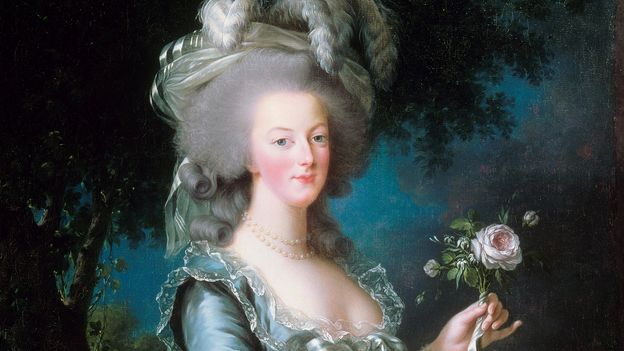Entertainment
Unraveling the Hatred: Why Marie Antoinette Faced Scorn

Marie Antoinette, the last Queen of France, was once regarded as one of the most reviled figures in European history. Her unpopularity stemmed from a combination of political turmoil, extravagant spending, and perceptions of indifference during a time of national crisis. Understanding the roots of this disdain reveals much about the societal dynamics of 18th-century France.
Born on November 2, 1755, in Vienna, Marie Antoinette became the queen consort of France after her marriage to King Louis XVI in 1770. Initially, the marriage was seen as a strategic alliance to strengthen ties between France and Austria, but it quickly became a source of animosity among the French populace. As the country faced increasing financial difficulties, Marie Antoinette’s lavish lifestyle became a focal point for public ire.
Extravagance Amidst Hardship
The queen’s spending habits were often highlighted in the press, particularly during a period when many French citizens were struggling with poverty and rising food prices. Reports of her extravagant parties and the construction of the Petit Trianon, a lavish retreat at the Palace of Versailles, fueled resentment. In 1781, the queen reportedly spent an estimated £1.5 million on her personal expenses, a staggering amount that contrasted sharply with the economic plight of the common people.
The infamous phrase “Let them eat cake,” attributed to Marie Antoinette, although likely misattributed, encapsulated the perceived disconnect between the monarchy and the populace. This quote suggested a lack of understanding of the struggles faced by the poor, further cementing her image as a symbol of excess and disregard.
The Role of Propaganda
Propaganda played a significant role in shaping public opinion against Marie Antoinette. Pamphlets and caricatures depicted her as a foreigner who betrayed her adopted country. The queen’s Austrian origins were leveraged to paint her as an outsider, and her perceived influence over her husband was portrayed as detrimental to French interests.
As the French Revolution gained momentum in the late 1780s, sentiments against the monarchy intensified. The queen became a target for revolutionaries, who viewed her as a significant obstacle to the reforms needed to address social inequalities. By the time the monarchy was abolished in 1792, Marie Antoinette was imprisoned, and her fate was sealed.
In October 1793, she was executed by guillotine, marking the end of a tumultuous chapter in French history. Her death symbolized the triumph of revolutionary ideals and the rejection of the old regime.
Legacy of Hatred
Marie Antoinette’s story remains a compelling narrative of how perception can shape historical legacy. While she was often vilified during her life, modern interpretations of her role in French history are more nuanced. Scholars argue that her actions should be viewed in the context of the broader socio-political landscape of the time.
Today, Marie Antoinette is both celebrated and condemned, embodying the complexities of monarchy, gender, and power. Her life serves as a reminder of how easily public opinion can shift, influenced by factors such as economic hardship, political unrest, and the relentless march of history.
As society grapples with issues of leadership and accountability today, the story of Marie Antoinette offers critical lessons on the human condition and the enduring impact of legacy.
-

 Health2 months ago
Health2 months agoNeurologist Warns Excessive Use of Supplements Can Harm Brain
-

 Health2 months ago
Health2 months agoFiona Phillips’ Husband Shares Heartfelt Update on Her Alzheimer’s Journey
-

 Science2 weeks ago
Science2 weeks agoBrian Cox Addresses Claims of Alien Probe in 3I/ATLAS Discovery
-

 Science2 weeks ago
Science2 weeks agoNASA Investigates Unusual Comet 3I/ATLAS; New Findings Emerge
-

 Science1 week ago
Science1 week agoScientists Examine 3I/ATLAS: Alien Artifact or Cosmic Oddity?
-

 Entertainment4 months ago
Entertainment4 months agoKerry Katona Discusses Future Baby Plans and Brian McFadden’s Wedding
-

 Science1 week ago
Science1 week agoNASA Investigates Speedy Object 3I/ATLAS, Sparking Speculation
-

 World2 months ago
World2 months agoCole Palmer’s Cryptic Message to Kobbie Mainoo Following Loan Talks
-

 Entertainment3 months ago
Entertainment3 months agoEmmerdale Faces Tension as Dylan and April’s Lives Hang in the Balance
-

 Science1 week ago
Science1 week agoNASA Scientists Explore Origins of 3I/ATLAS, a Fast-Moving Visitor
-

 Entertainment4 months ago
Entertainment4 months agoLove Island Star Toni Laite’s Mother Expresses Disappointment Over Coupling Decision
-

 Entertainment2 months ago
Entertainment2 months agoMajor Cast Changes at Coronation Street: Exits and Returns in 2025









